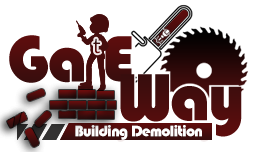Labors And Drivers for Demolition Projects
Workforce Recruitment: Build a pool of skilled and experienced laborers who specialize in demolition work. Recruit individuals with expertise in areas such as dismantling structures, handling hazardous materials, operating heavy machinery, and site cleanup.
Driver Recruitment: Hire drivers who possess the necessary licenses and experience to operate vehicles involved in demolition projects. This may include trucks for material transportation or heavy equipment transportation.
Safety Training: Ensure that all your laborers and drivers receive proper safety training and certifications. Demolition work can be hazardous, so it’s essential to prioritize safety protocols and provide appropriate protective gear.
Licensing and Certification: Check local regulations and licensing requirements related to labor and driver services for demolition projects. Ensure that your employees have the necessary certifications and licenses, such as commercial driver’s licenses (CDL) for drivers of heavy vehicles.
Insurance Coverage: Obtain the appropriate insurance coverage to protect your employees, clients, and equipment during demolition projects. This can include liability insurance, workers’ compensation, and vehicle insurance.
Project Assessment: Collaborate with your clients to assess the scope and requirements of each demolition project. Understand their specific needs, timelines, and any specialized equipment or skills that may be necessary.
Staff Allocation: Assign the appropriate number of laborers and drivers based on the size and complexity of each demolition project. Ensure that you have sufficient resources to meet project deadlines and goals.
Equipment and Tools: Provide your laborers with the necessary equipment and tools to carry out their tasks efficiently and safely. This may include protective gear, demolition tools, personal safety equipment, and any specialized machinery or vehicles required for the project.
Project Management: Oversee the coordination of laborers and drivers on-site, ensuring smooth communication, adherence to project schedules, and compliance with safety regulations. Have a designated project manager or supervisor to oversee operations.
Quality Control and Customer Satisfaction: Regularly assess the performance of your laborers and drivers to ensure high-quality service delivery. Seek feedback from clients and address any concerns promptly to maintain customer satisfaction.
